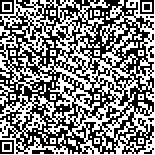| 摘要: |
| [摘要] 目的 分析江苏大学附属金坛人民医院普外科大肠埃希菌医院感染和社区感染的情况,并探讨其耐药性,为临床合理用药提供理论依据。方法 以江苏大学附属金坛人民医院普外科2017-01~2019-12住院患者临床标本中分离出的大肠埃希菌108株为研究对象,将其分为医院感染组和社区感染组,对大肠埃希菌医院感染发生率、标本分布、多重耐药等情况进行分析,并比较两组大肠埃希菌对常见抗菌药物的耐药率。结果 普外科医院感染大肠埃希菌32株(占17.78%),社区感染菌株148株(占82.22%)。大肠埃希菌医院感染发生率随年份的增加而上升(P<0.05)。大肠埃希菌主要从伤口引流液中检出。与社区感染的大肠埃希菌比较,医院感染的大肠埃希菌更易产生多重耐药(P<0.05),且对碳青霉烯类、头孢菌素类、氟喹诺酮类药物的耐药率更高(P<0.05)。产超广谱β内酰胺酶(ESBLs)大肠埃希菌对复方新诺明、头孢菌素类药物、氟喹诺酮类的耐药率高于非产ESBLs(P<0.05)。医院感染组的产ESBLs大肠埃希菌对亚胺培南、妥布霉素的耐药率高于社区感染组(P<0.05)。结论 医院感染与社区感染的大肠埃希菌对头孢西丁、阿米卡星均较敏感,碳青霉烯类、头孢西丁、阿米卡星可作为治疗产ESBLs大肠埃希菌感染的首选药物。应积极落实多重耐药菌的防控措施,根据患者的病情、药敏及经济情况合理选择抗菌药物,防止大肠埃希菌在医院的传播扩散。 |
| 关键词: 大肠埃希菌 医院感染 社区感染 耐药性 |
| DOI:10.3969/j.issn.1674-3806.2021.05.15 |
| 分类号:R 378.2+1 |
| 基金项目: |
|
| Distribution of hospital infection and community infection of Escherichia coli in a hospital from 2017 to 2019 and its drug-resistance analysis |
|
HUANG Cong, WANG Yu-mu
|
|
Department of General Surgery, Jintan District People′s Hospital Affiliated to Jiangsu University, Jiangsu 213200, China
|
| Abstract: |
| [Abstract] Objective To analyze the hospital infection and community infection of Escherichia coli in the Department of General Surgery of Jintan District People′s Hospital Affiliated to Jiangsu University and to explore its drug resistance, so as to provide theoretical basis for rational drug use in clinical practice. Methods The Escherichia coli isolated from the clinical specimens of the inpatients in the Department of General Surgery of Jintan District People′s Hospital Affiliated to Jiangsu University from January 2017 to December 2019 was selected as the research object, which was divided into the hospital infection group and the community infection group. The incidence of hospital infection, specimen distribution and multi-drug resistance of Escherichia coli were analyzed, and the resistance rates of Escherichia coli to common antibiotics were compared between the two groups. Results Thirty-two strains(accounting for 17.78%) of Escherichia coli causing hospital infection in the Department of General Surgery and 148 strains(accounting for 82.22%) causing community infection were detected. The incidence of hospital infection of Escherichia coli increased with the increase of years(P<0.05), and the Escherichia coli was mainly detected from wound drainage fluid. Compared with community infected Escherichia coli, hospital infected Escherichia coli was more likely to produce multiple drug resistance(P<0.05), and the hospital infected Escherichia coli had higher drug resistance rates to carbapenems, cephalosporins and fluoroquinolones(P<0.05). Extended-spectrum β-lactamases(ESBLs)-producing Escherichia coli had higher drug resistance rates to compound sulfamethoxazole, cephalosporins and fluoroquinolones than non-ESBLs-producing Escherichia coli(P<0.05). The resistance rates of ESBLs-producing Escherichia coli to imipenem and tobramycin in the hospital infection group were higher than those in the community infection group(P<0.05). Conclusion Both hospital infected Escherichia coli and community infected Escherichia coli are sensitive to cefoxitin and amikacin. Carbapenems, cefoxitin and amikacin can be used as the first choice for the treatment of ESBLs-producing Escherichia coli infection. The prevention and control measures of multi-drug resistant bacteria should be actively implemented, and antibacterial drugs should be selected reasonably according to the patients′ condition, drug sensitivity and economic conditions, so as to prevent the spread of Escherichia coli in hospitals. |
| Key words: Escherichia coli Hospital infection Community infection Drug resistance |

